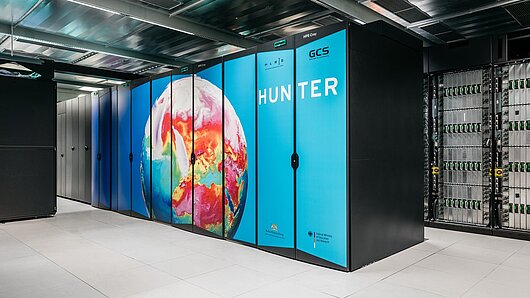Hunter is HLRS’s newest flagship supercomputer. Based on the HPE Cray EX4000 platform from Hewlett Packard Enterprise, it is a world-class high-performance computing system that enables large-scale, state-of-the-art applications of simulation, artificial intelligence, and data analytics, including hybrid computing approaches that combine diverse methods into powerful workflows.
Hunter marks a milestone for HLRS, as it moves away from the center’s previous CPU-oriented approach to make greater use of GPUs. At its core is the AMD Instinct™ MI300A accelerated processing unit (APU), which combines CPUs, GPUs, and high-bandwidth memory in a single package.
The technology offers fast data transfer speeds, impressive performance, easy programmability, and great energy efficiency. With a theoretical peak performance of 48.1 PFlop/s, Hunter's speed is nearly double that of its predecessor, Hawk, while slashing energy requirements at peak performance by approximately 80%.
HLRS conceived Hunter as a transitional system that will enable system users to prepare for its upcoming supercomputer, Herder. Hewlett Packard Enterprise will also manufacture that future next-generation system, whose installation is scheduled to begin in 2027.
In June 2025, Hunter debuted at number 12 on the Green500 List of the world's most energy efficient supercomputers.
